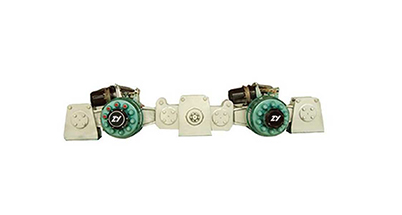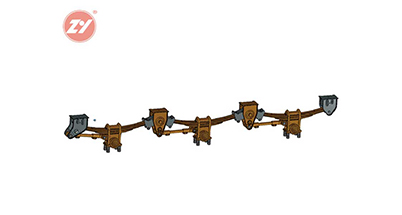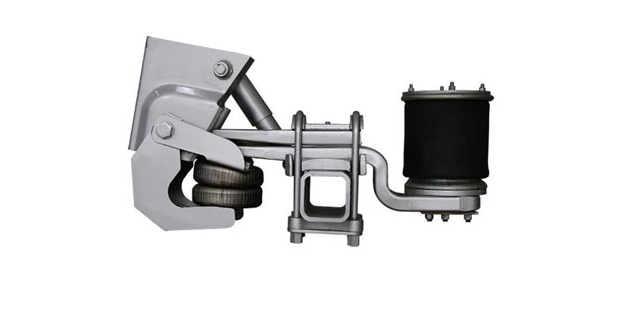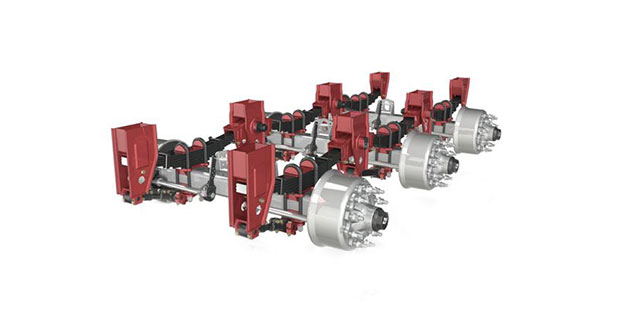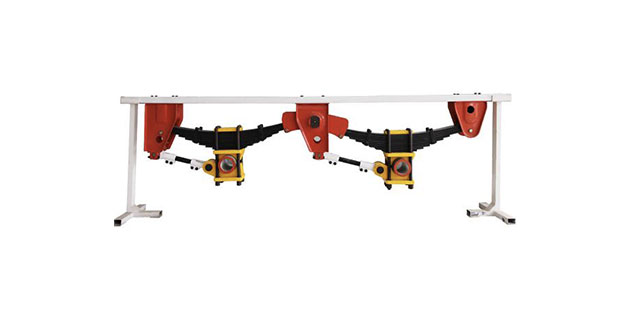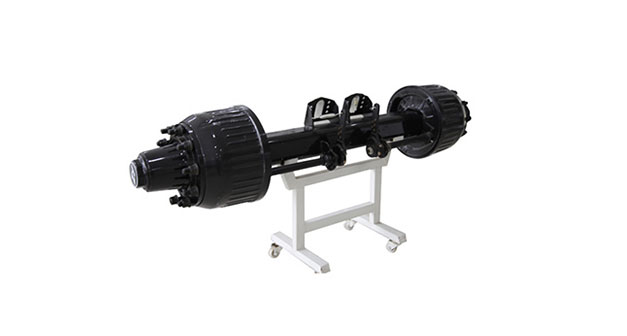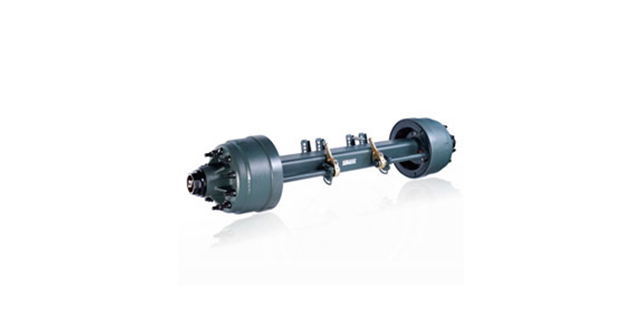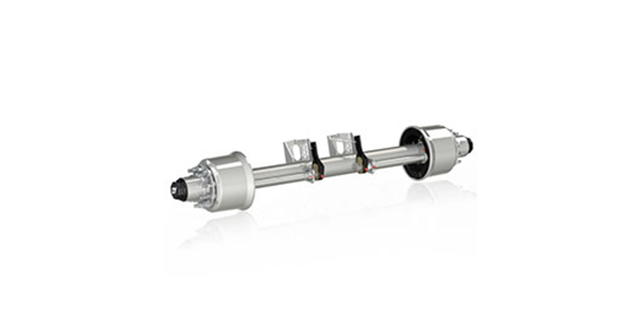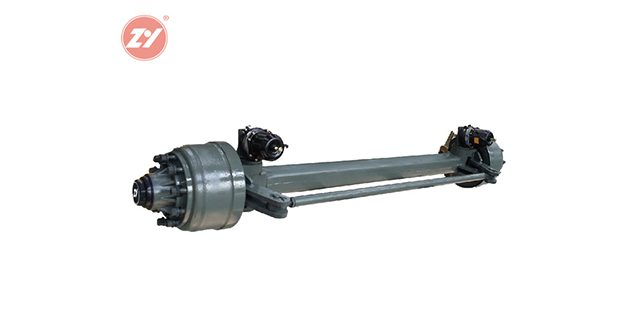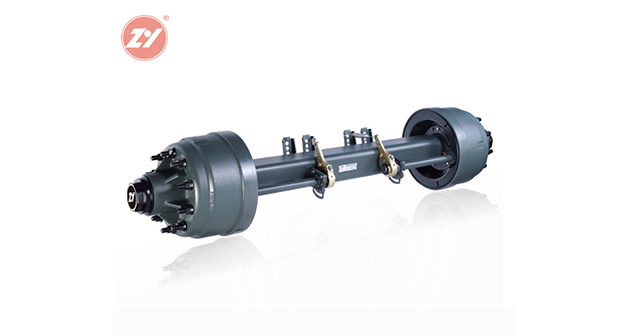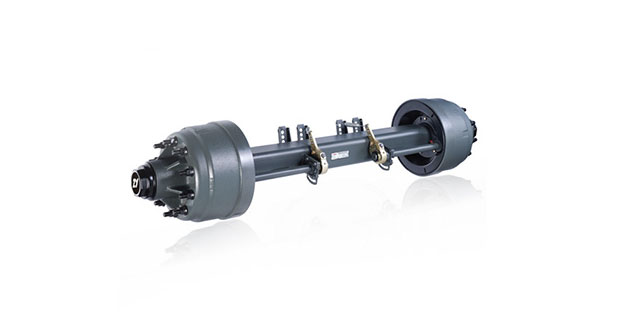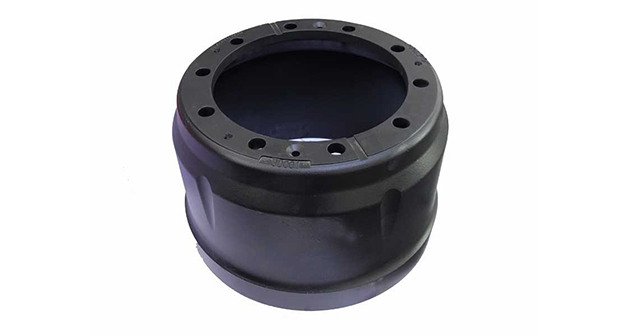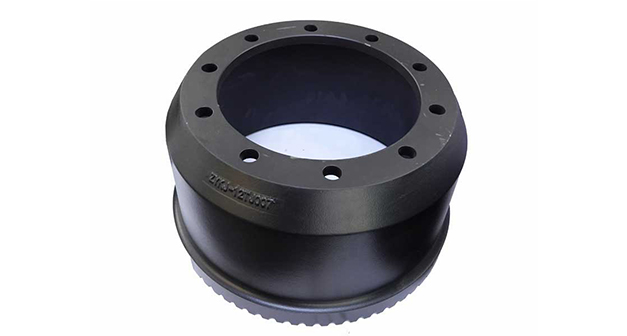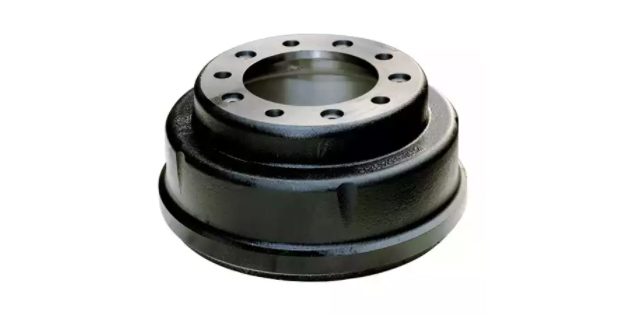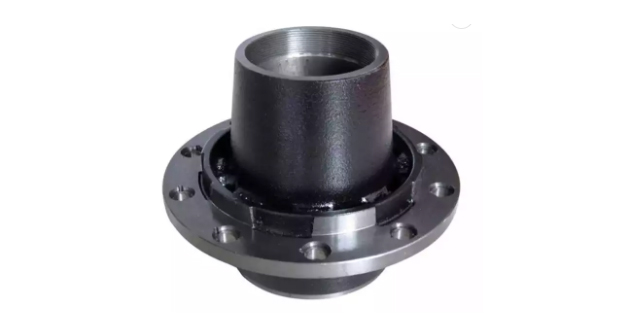The trailer suspension is a device installed between the frame and the axle to provide a load-bearing connection. It transmits forces andtorque between the wheels and frame, and also cushions the impact of uneven road surfaces on the vehicle body to reduce vibration and ensure smooth driving.
Trailer Suspension Components: Elastic Elements
Mainly used to bear and transmit vertical loads, cushion impacts from the road, and can generally be divided into leaf springs, air springs, coil springs, and torsion springs.
Leaf Springs
Leaf springs are currently the most common elastic elements in trailer suspension components and can be categorized into multi-leaf and mono-leaf types. They can also act as a guiding device and have some damping function.
The advantages of leaf springs are their simple structure, reliable strength, low cost, and easy maintenance. The disadvantages are high weight, poor comfort, long longitudinal dimensions which are not conducive to shortening the front and rear overhang of the vehicle, and the ease with which the leaf spring pins at the connection to the frame wear out.
Air Springs
Air springs are the main elastic elements used in air suspensions. They achieve elasticity through the compressibility of gas by injecting compressed air into a sealed container.
The advantages of air springs are their light weight, compliance with lightweight trends, excellent nonlinear elastic properties, good damping performance, strong protection ability for cargo, and the ability to achieve single or multi-axle lifting after adding a height adjustment device. These advanced trailer spares offer significant benefits in various applications. The disadvantages are their relatively complex structure, high cost, poor strength, and more cumbersome maintenance.
Torsion Springs
Torsion springs are used in cars, trucks, and off-road vehicles. Their advantages are light weight, high energy absorption rate, compact size, high load capacity, and superior energy absorption compared to leaf springs or even coil springs. They also do not require additional lubrication. However, the disadvantages are apparent, such as high cost, difficult processing, and significant challenges in popularization.
Trailer Suspension Components: Guiding Devices
These are used to transmit longitudinal and lateral forces and resulting moments, while maintaining a certain movement pattern of the wheels relative to the body. As a professional trailer spare parts factory, we produce a variety of these components. Guiding devices can be categorized into non-independent and independent suspensions based on their basic form.
Non-Independent Suspension
The structural characteristic of non-independent suspension is that the two wheels are connected by an integral axle. The wheels, along with the axle, are suspended under the vehicle body through the suspension. This structure is simple, low-cost, strong, easy to maintain, and offers minimal front wheel alignment changes during driving. The disadvantage is that its shock absorption and passing ability are inferior to independent suspensions. Generally, non-independent suspensions are more suitable for cargo vehicles. For instance, the load-bearing axles of heavy trucks, trailers, and semi-trailers usually use non-independent suspension axles.
Independent Suspension
Independent suspension, also known as articulated axle, uses a joint structure in the middle which allows the wheels on both sides to move independently without affecting each other. Its advantages are lower engine installation position, lower vehicle center of gravity, stronger driving stability, and the ability to keep one wheel independent from the other during bumping, reducing the vehicle body's jolting and vibration. It also provides better passing ability in complex, harsh road conditions. However, its drawback is poor load-bearing capacity, as it lacks the central axle beam structure, which can be somewhat inadequate for cargo transportation.
Trailer Suspension Components: Shock Absorbers
When the elastic elements in the suspension system are impacted, they generate vibrations. To improve the vehicle's ride comfort, shock absorbers are mounted in parallel with the elastic elements in the suspension to quickly dampen the vibrations of the frame and body.


